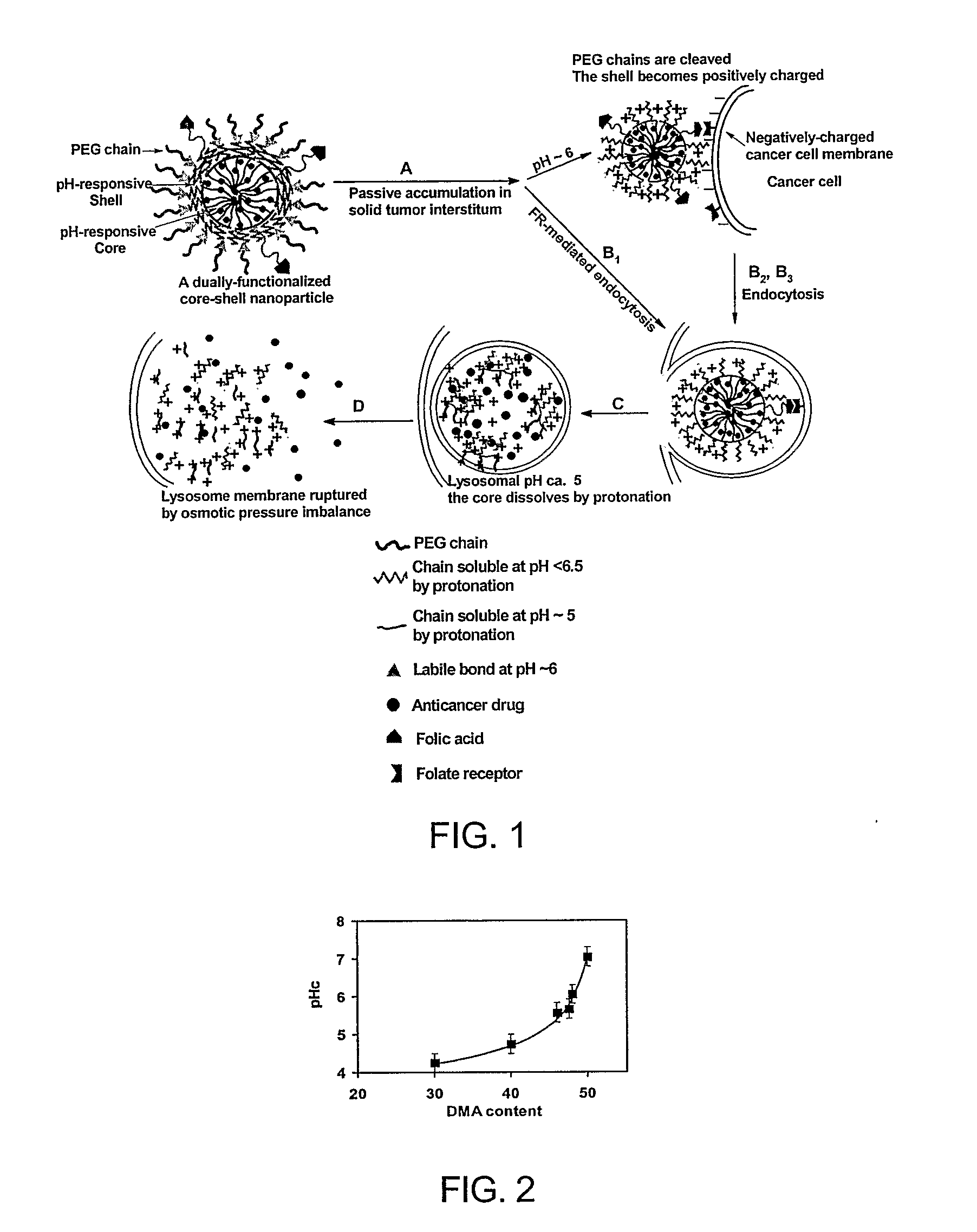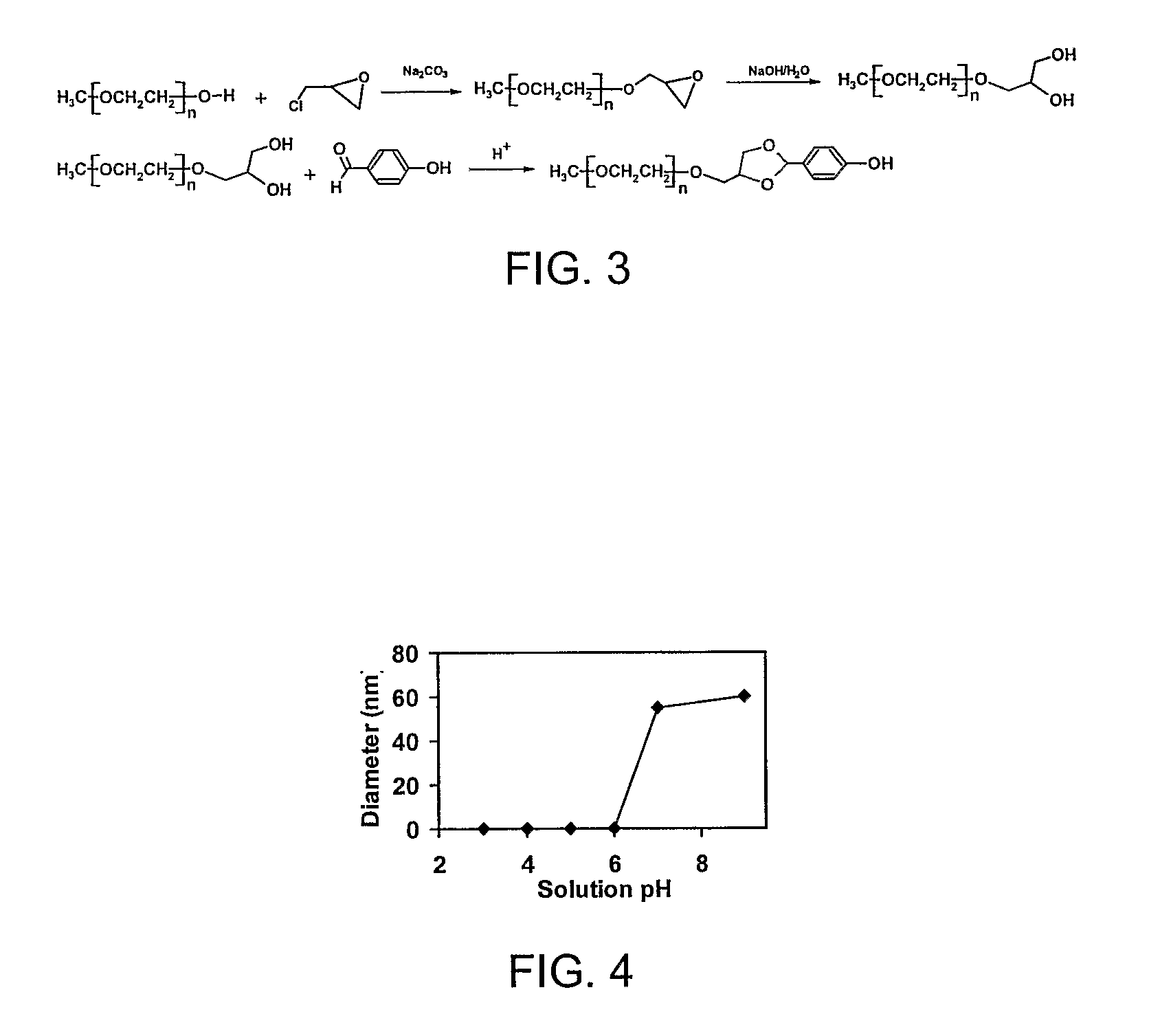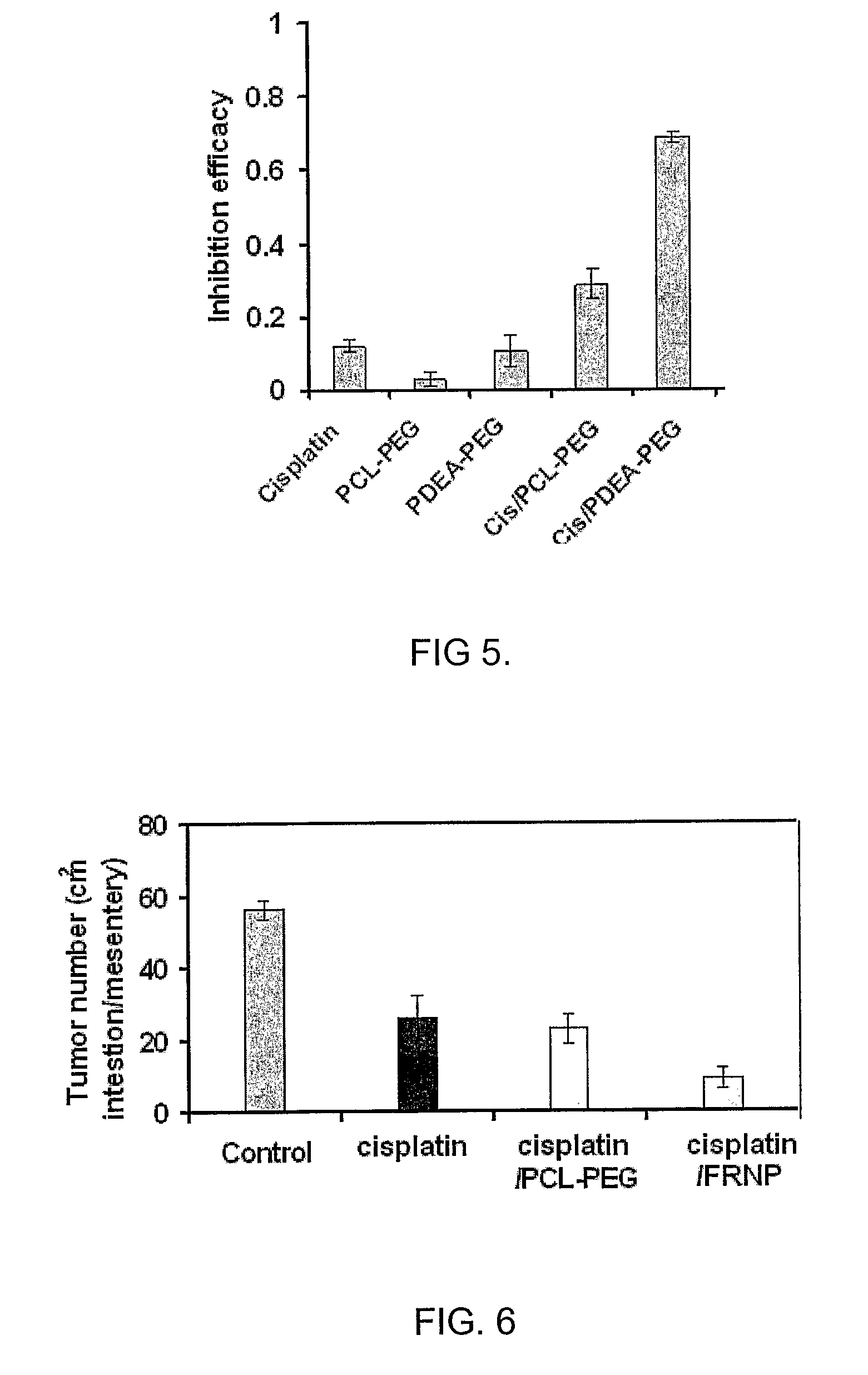Nanoparticles for Cytoplasmic Drug Delivery to Cancer Cells
a technology of nanoparticles and cancer cells, applied in the field of nanoparticles, can solve the problems of insufficient selectivity of anticancer drugs for cancer, insufficient cytoplasmic drug delivery to cancer cells, and insufficient cytoplasmic drug delivery, so as to enhance the absorption of nanoparticles, prolong the circulation time, and increase the effect of anticancer drug levels
- Summary
- Abstract
- Description
- Claims
- Application Information
AI Technical Summary
Benefits of technology
Problems solved by technology
Method used
Image
Examples
example 1
Slow- and Fast-Release Nanoparticles with a Core and a Single-Layer Corona
[0041]An example of a fast-release single-layer nanoparticles are nanoparticles with pH-responsive poly[2-(N,N-diethylamino)ethyl methacrylate) (PDEA), synthesized from PDEA-block-poly(ethylene glycol) (PDEA-PEG) copolymer using a solvent-displacement (acetone-water) method. On the other hand, nanoparticles with pH-resistant poly(ε-caprolactone) (PCL) cores, synthesized from PCL-block-PEG (PCL-PEG), is an example of slow-release single-layer nanoparticles. We provide the latter as a point of reference for evaluating the rate of release.
example 2
Cationic-Charged Functionalized Nanoparticles, for Example, Tumor-Cell-Triggered Instant-Intracellular-Drug-Releasing (IIDR) Nanoparticles
[0042]The tumor-cell-triggered instant-intracellular-drug-releasing (IIDR) nanoparticles are characterized in vitro and in vivo and evaluated for enhanced cancer chemotherapy by overcoming cancer drug resistance. An example of a nanoparticle according to the present invention and its action are shown in FIG. 1.
[0043]The IIDR nanoparticle has a three-layer-onion structure with a diameter around between about 10 and 500 nm, preferably between about 50 and 300 nm and most preferably between about 75 and 150 nm. Its core-surface or shell-surface is crosslinked for improved stability. The outer layer consists of water-soluble polymer chains. These chains shield the nanoparticle from RES recognition and give the nanoparticle a long circulation time in bloodstream [Kwon, 1998; Brigger et al., 2002]. The water-soluble chains are linked to the shell with a...
example 3
Folic Acid, Cationic-Charged Dually-Functionalized Fast-Release Nanoparticles
[0046]An alternative embodiment of the invention makes use of the folic acid moieties to enhance the uptake of the dually functionalized nanoparticles by the cancerous cells. The dually functionalized nanoparticle has a three-layer-onion structure with folic acid groups tethered on the outer layer of the nanoparticles shown in Example 2.
[0047]After intravenous administration, the nanoparticles extravasate and are trapped in the tumor interstitium (FIG. 1A). Subsequently, three endocytosis processes may occur: 1) The folic acid moieties on the nanoparticle surface may bind folate-receptors on cell membranes and trigger FR-Endo (B1); 2) In the acidic tumor interstitium, the acid-labile bonds (▴) begin to break and the PEG chains are shed off from the nanoparticle surface to expose the shell layer, the shell layer is positively charged at this pH and thus adsorbed on the negatively-charged cell membrane, leadi...
PUM
| Property | Measurement | Unit |
|---|---|---|
| size | aaaaa | aaaaa |
| size | aaaaa | aaaaa |
| size | aaaaa | aaaaa |
Abstract
Description
Claims
Application Information
 Login to View More
Login to View More - R&D
- Intellectual Property
- Life Sciences
- Materials
- Tech Scout
- Unparalleled Data Quality
- Higher Quality Content
- 60% Fewer Hallucinations
Browse by: Latest US Patents, China's latest patents, Technical Efficacy Thesaurus, Application Domain, Technology Topic, Popular Technical Reports.
© 2025 PatSnap. All rights reserved.Legal|Privacy policy|Modern Slavery Act Transparency Statement|Sitemap|About US| Contact US: help@patsnap.com



